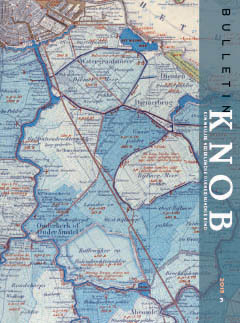Indexing ESCI / Scopus


Steffen Nijhuis en Michiel Pouderoijen: De polderkaart van Nederland. Een instrument voor de ruimtelijke ontwikkeling van het laagland. Trudi Brink: Ontworpen voor de eeuwigheid. De memoriesculptuur voor Joost Sasbout en Catharina van der Meer in de Eusebiuskerk te Arnhem. Frans Doperé en Karel Emmens: Steenhouwtechnieken in de Onze-Lieve-Vrouwekerk in Breda. Detailanalyse van de bouw van het koor. Publicatie: Jeroen Goudeau en Agnes van der Linden (red.), Jan Stuyt (1868-1934). Een begenadigd en dienend architect (recensie Niels van Neck).
The Dutch lowlands consist mainly of polders, areas where water levels are artificially controlled so people can live and work there. This century-old interaction between man and water has produced a rich and of their right polder landscape. The great variety in polder shapes is caused by differences in the geological subsoil, the dynamics of water and land and human intervention.
The Dutch lowlands of today are gradually transformed into multifunctional spaces where uses such as leisure and tourism, nature, water storage and housing become more and more important besides...
The monument for Joost Sasbout and Catharina van der Meer in the Eusebius Church in Arnhem is a remembrance sculpture from the mid-16th century. Joost Sasbout was appointed chancellor of the newly founded court of justice in Arnhem, after the duchy of Gelre had come under Habsburg rule in 1543. Joost Sasbout died in 1546 and was buried in a tomb in the Eusebius Church, while his wife, Catharina, was buried in The Hague when she died in 1560.
The sculpture featured a religious representation of The Birth of Christ, which is now gone. The inscriptions underneath, carved as...
An extensive study in Belgium of the stone-cutting techniques on white Belgian limestone (Gobertange limestone (Brabant), Brussels limestone and limestone from Lede (Flanders)) has shown that the visible traces of the stone-cutting-work realized by the stone-mason changed twice during the first half of the 15th century: the first time between 1400 and 1420, and once again between 1430 and 1450.
Based on archival information and dendrochronological dating work the construction of the choir of the Church of Our Lady in Breda could be dated between 1410 and 1450, thus making it an...
Review of a book edited by Jeroen Goudeau and Agnes van der Linden
